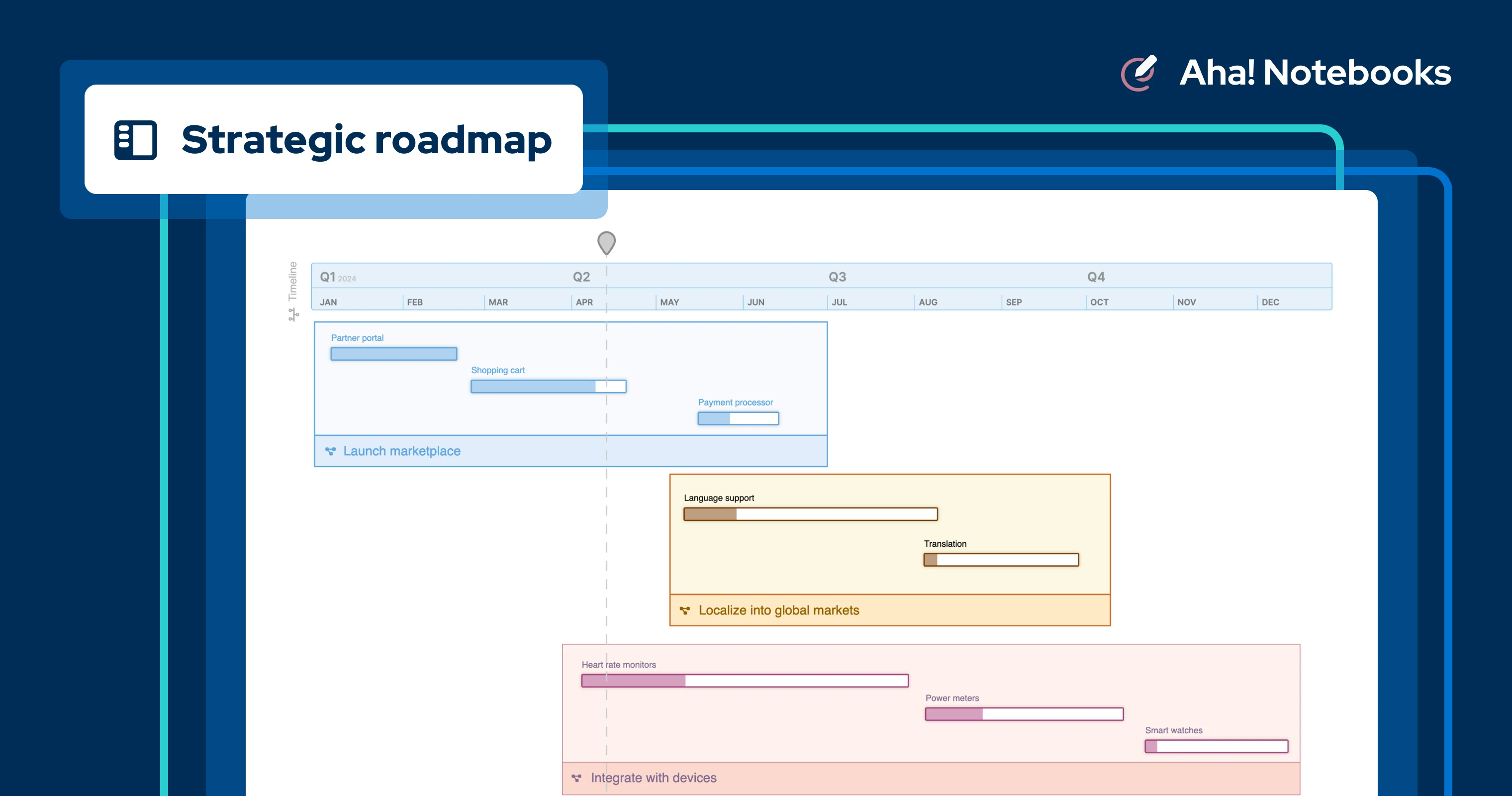
Strategic thinking vs. strategic planning
Last updated: March 2024
Goal first. There is a reason this is the number one principle of The Responsive Method (TRM), the framework we use at Aha! for personal and business success. A goal-first approach is foundational — it influences every decision we make about serving our customers and teammates. When you have a clear vision for where you are headed, you can think strategically about each situation to determine what is worth investing effort into (and what is not).
But strategic thinking is only the beginning — you also need a strategic plan to turn your insights into action.
If you have read some of the other “vs.” blog posts I have written, you know that I like to begin with basic definitions. Strategic thinking is the process of determining the direction you will take to achieve your vision. Strategic planning is the process of developing a blueprint for the work you will do against that direction.
Many people conflate these two concepts. There is even confusion among business and management experts. I have read articles with “strategic thinking” in the title that then go on to discuss the minutia of strategic planning. I believe this happens because both concepts speak to the future. They proactively address the long-term needs of the organization but in different ways.
Purpose, process, skills, timing — when you understand the differences between strategic thinking and strategic planning, you can become better at both.
Strategic thinking is active and ongoing. It informs your planning and represents the “why” and the “what” of the work you want to accomplish. You can apply it against your everyday work or decisions to determine viability and assess alignment with your goals. Strategic planning is fixed to a specific project or effort and represents the “how” and the “when.”
Build strategic plans in Aha! Roadmaps. Get started for free.
The two work in partnership. Because even the best insights are futile without a plan to actually implement. And if you try to plan without a clear vision for what you want to achieve, you will not get very far. Mastering both is how you bring a thoughtful approach to your work and deliver on your goals.
Read all the way through for a few ways to think about the differences. Or use the following links to skip ahead:
Purpose
Strategic thinking is about defining where you want to go and what you want to achieve. It is useful for when you need to make an informed decision, solve a problem, or improve a process. Strategic thinking helps you consider the long-term value and consequences of taking a particular approach.
Strategic planning is about defining how you will implement your vision. It is useful for detailing the steps needed to solve a problem, improve a process, or deliver something new. Strategic planning is also critical when preparing for a major change. This could be embarking on a business transformation or undergoing a merger, acquisition, or other large organizational shift.
Process
Strategic thinking requires envisioning what you want to accomplish and formulating solutions to problems. You can do this by conducting research, performing root cause analysis, and devising alternative approaches. Record your ideas and observations to help bolster your strategic thinking skills. Take notice of patterns and trends and speak to colleagues to consider perspectives that may be different than your own.
Strategic planning requires translating those insights into measurable and actionable objectives. Setting goals, defining workflows to accomplish the work, and creating a corresponding timeline are all part of the process. Once you have a target end state in mind, work backwards to anticipate potential roadblocks and determine how to best reach that target. Strategic planning models and purpose-built roadmapping software help teams do this work better together.
Skills
Effective strategic thinking requires:
Curiosity
Boldness
Open-ended thinking
Pattern recognition
Problem-solving
Effective strategic planning requires:
Organization
Prioritization
Critical thinking
Risk management
Flexibility
Time frame
Strategic thinking comes before strategic planning — but it does not stop. It is a skill you can apply to your everyday work to help you make decisions more quickly and prioritize areas that are worth investing in. Ideally, thinking strategically is ongoing. It is something that you do all the time.
Strategic planning typically occurs before you undertake a specific project. But you need to review your plan regularly after creating it. This allows you to track progress and make adjustments as circumstances change. It is important to note that a roadmap is simply a visualization of your strategic plan — it lays out the details of how you will turn the plan into action and shows a timeline for completion.
Strategic thinking and strategic planning are powerful tools for actualizing your vision — both are necessary to bring about the future state you desire.
Both also require seeing beyond yourself. Look up. Cast your eyes past the maintenance-mode efforts and into the innovation that is possible. Bring more productivity to each day by assessing what you will do or not do against the impact it will bring.
It takes courage and determination to conceptualize a new or better way. But whether you are a company leader or an individual contributor, you can use strategic thinking and planning to drive proactive change. Time is not something we can get more of. Especially right now, the most powerful thing you can do is continue to grow and build towards the future.
Aha! is the world’s #1 roadmap software. Start a free trial today.
Here for a template? Try these:




